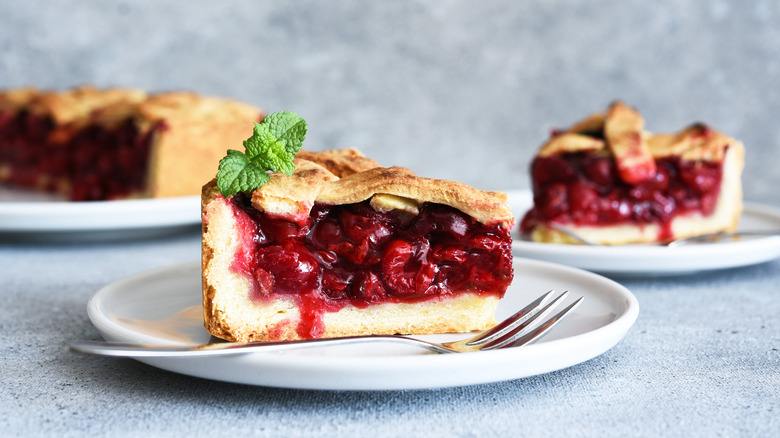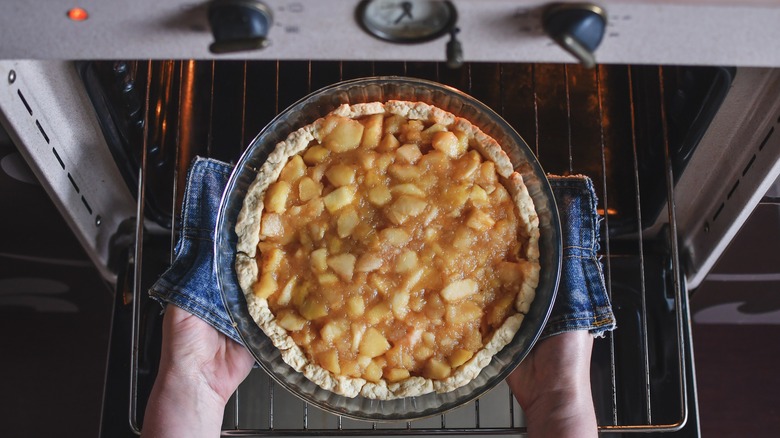Why You Shouldn't Rush Baking Pie
'Tis the season for baking all kinds of homemade desserts, but the holidays are really the time for pie to shine. Obviously, cakes and cookies also share the festive stage, but pastry shells filled with a variety of delicious fillings tend to be the star of the show. From fruit to cream to chess, pies mark special occasions with their decorative beauty and flavor-packed fillings.
The use of pastry in the production of a pie is what sets it apart from its fellow fanciful desserts. Whereas cakes and cookies need to rise in the oven before being visibly baked to completion, pies don't really grow in the oven. The pastry crust will puff up a bit, but deciphering when a pie has baked thoroughly is a little more tricky.
It's important to understand what a pie needs to bake completely in order to avoid the ultimate depressing disaster that is biting into an underbaked dessert — and watching your family do the same.
Pies need time to bake evenly
If a pie doesn't rise, how can you tell if it's done baking? You can't! And that's why it's important to follow your recipe closely and bake for the exact recommended time and at the exact recommended temperature.
Also, and most importantly, because a pie crust bakes alongside the gooey filling it holds, most problems in pie-baking come from baking one component thoroughly while the other remains raw or underdone. King Arthur acknowledges that hearing about "soggy bottoms" on "The Great British Baking" show is funny, but when you accidentally bake a pie that's baked on top but raw on the bottom, it's definitely not amusing.
King Arthur suggests baking your pie on a preheated pizza stone so that the bottom layer of pastry is closer to direct heat that will bake it thoroughly. Similarly, EatingWell suggests baking your pie on the bottom rack of your oven for the same reason.

